Table of Contents
Come join us now, and enjoy playing your beloved music and browse through great scores of every level and styles!
Can’t find the songbook you’re looking for? Please, email us at: sheetmusiclibrarypdf@gmail.com We’d like to help you!
Sorabji: In the Hothouse (from Two Piano Pieces) sheet music, Noten, partitura, spartiti 楽譜

Best Sheet Music download from our Library.

Please, subscribe to our Library.
If you are already a subscriber, please, check our NEW SCORES’ page every month for new sheet music. THANK YOU!
Browse in the Library:
Or browse in the categories menus & download the Library Catalog PDF:
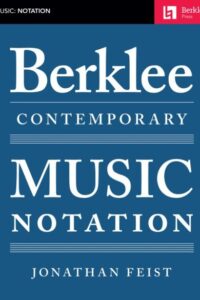
Who was Sorabji?
Kaikhosru Shapurji Sorabji: The Hermit of Modernist Maximalism
In the often-crowded pantheon of 20th-century composers, Kaikhosru Shapurji Sorabji (1892-1988) occupies a unique and enigmatic niche. A composer of staggering ambition, labyrinthine complexity, and self-imposed isolation, Sorabji crafted some of the most monumental, technically demanding, and stylistically idiosyncratic music ever conceived. His work, largely ignored during his lifetime and still challenging audiences today, represents a singular path through modernism – one defined by maximalism, intricate ornamentation, transcendental virtuosity, and a fierce, almost hermetic, independence.

Biography: A Self-Forged Identity
- Birth & Heritage: Born Leon Dudley Sorabji on August 14, 1892, in Chingford, Essex, England. His father was a Parsi engineer from India (thus the Persian-derived name Sorabji), and his mother was English-Spanish. This mixed heritage profoundly shaped his sense of identity, though he felt alienated from both cultures.
- The Name: Around 1914, he legally changed his name to Kaikhosru Shapurji Sorabji. “Kaikhosru” and “Shapurji” were Persian names chosen for their resonance and connection to ancient Persian history and Zoroastrianism, reflecting his deliberate construction of a unique persona.
- Musical Formation: Largely self-taught. He received some piano lessons in his youth but had no formal composition training. His musical education came through voracious listening, score study (especially Bach, Liszt, Busoni, Debussy, Ravel, Scriabin, Szymanowski, Medtner), and wide reading in literature, philosophy, and the occult.
- Early Career & Criticism: Worked as a music critic (under the pseudonym “S. Godfrey”) for outlets like The New Age and The New English Weekly from the 1910s to the 1930s. His critiques were famously acerbic, insightful, and often scathing, particularly targeting English musical provincialism and composers he deemed mediocre (which was most of them).
- The Recluse: Deeply disillusioned by the musical establishment and critical reception to his early performances (which were rare and often controversial), Sorabji gradually withdrew from public musical life starting in the late 1930s. After his mother’s death in 1940, he retreated almost completely to his secluded home “The Eye” in Corfe Castle, Dorset, where he lived with his companion, Reginald Norman Best, until his death. He forbade performances of his music for decades.
- The Ban Lifted: In 1976, pressured by a growing underground interest spearheaded by pianists like Yonty Solomon and Alistair Hinton (who later became his literary executor), Sorabji reluctantly lifted the ban on performances, provided he approved the performer.
- Death: Sorabji died on October 15, 1988, in Winfrith Newburgh, Dorset, leaving behind a colossal legacy of unpublished manuscripts.
Works: Monuments of Sound

Sorabji’s output is vast and overwhelmingly dominated by solo piano music, though he also composed orchestral works, chamber music, organ symphonies, and songs. His works are renowned for their extreme length, density, and technical difficulty, pushing the boundaries of playability.
- Key Masterpieces:
- Opus Clavicembalisticum (1930): His most famous (or infamous) work. A colossal 4+ hour piano epic in 12 movements (including fugues, passacaglias, toccatas, cadenzas), often considered one of the most challenging solo piano works ever written. A summit of contrapuntal complexity and virtuosic display.
- Symphonic Variations for Piano (1935-37): Another monumental work, exploring vast variation forms over an extended duration.
- Sequentia Cyclica super “Dies iræ” ex Missa pro Defunctis (1948-49): A massive cycle of 27 variations on the “Dies Irae” chant, demonstrating his intricate contrapuntal and transformative skills.
- 100 Transcendental Studies (1940-44): True to their name, these studies explore extreme technical and expressive demands far beyond those of Liszt or Chopin.
- Symphonies for Solo Piano: Several exist, including his Symphony No. 2 (“Jāmī”), blending orchestral textures and scope onto the piano.
- Gulistān – Nocturne for Piano (1940): A prime example of his lush, perfumed, and incredibly intricate “Persian”-inspired style.
- Concerti: He wrote several for solo piano and orchestra (e.g., Concerto per suonare da me solo e senza orchestra, per divertirsi), which are symphonic in scale and require superhuman virtuosity.
- Symphonies for Organ: Vast, complex works exploring the sonic possibilities of the instrument.
Analysis of Style: A Universe of Complexity
Sorabji’s style is instantly recognizable yet difficult to categorize. It synthesizes diverse elements into a unique and overwhelming whole:
- Maximalism: This is the defining characteristic. Sorabji embraced extremes:
- Length: Works lasting several hours are common.
- Density: Highly polyphonic textures, often with multiple independent melodic lines woven together in complex counterpoint (influenced by Bach, Busoni).
- Virtuosity: Demands transcendental technique – cascades of notes, complex polyrhythms, wide leaps, immense power, and extreme delicacy. He wrote as if the pianist had four hands.
- Ornamentation: Baroque-like ornamentation (trills, mordents, turns, grace notes) is ubiquitous, often layered and integral to the texture, creating shimmering, kaleidoscopic surfaces (influenced by Scriabin, Szymanowski, Middle Eastern/Persian music).
- Dynamic Range: From barely audible whispers to thunderous, percussive climaxes.
- Harmony: A complex fusion:
- Rooted in late-Romantic chromaticism (Scriabin, Szymanowski, early Schoenberg).
- Freely employed dissonance, clusters, and intricate chord structures.
- Often retained a sense of tonal centers or polarity, even amidst dense chromaticism (unlike strict atonality).
- Incorporated modal inflections, sometimes evoking Persian or Spanish flavors.
- Rhythm: Highly complex and fluid:
- Frequent use of polyrhythms (multiple simultaneous rhythms), cross-rhythms, and nested tuplets (triplets within quintuplets, etc.).
- Tempo often fluctuates wildly, requiring immense control.
- A sense of improvisatory freedom within highly structured forms.
- Form: Often large-scale, complex, and idiosyncratic:
- Favored variations (passacaglias, chaconnes), fugues, toccatas, and intricate multi-movement structures (like the Opus Clavicembalisticum).
- Forms were often expansive and cumulative, building through layered repetition and intensification rather than traditional development.
- Architecture was paramount, even in the densest textures.
- Influences (Assimilated, Not Imitated):
- Ferruccio Busoni: The most profound influence. Busoni’s ideas of “Young Classicism,” the transcendental potential of the piano, the fusion of Bachian counterpoint with modern harmony, and the concept of “Junge Klassizität” resonated deeply. Sorabji dedicated his Opus Clavicembalisticum to Busoni’s memory.
- Franz Liszt: Virtuosity, thematic transformation, large-scale forms, and the symphonic poem concept translated to piano.
- J.S. Bach: Contrapuntal mastery, structural rigor, and the use of forms like fugue and passacaglia.
- Alexander Scriabin: Mysticism, harmonic language, dense textures, and ecstatic climaxes.
- Karol Szymanowski: Sensuous harmony, intricate ornamentation (especially in the “Persian” inspired works like Métopes and Masques), and voluptuous textures.
- Debussy & Ravel: Color, texture, exoticism, and pianistic refinement.
- Mediterranean & Persian Cultures: While not authentically recreating these styles, he evoked their essence through ornamentation, melodic turns, and titles (Gulistān, Jāmī), reflecting his fascination with his Persian heritage and the wider Orient.
- Aesthetic: Sorabji’s music aimed for:
- Transcendence: Pushing beyond perceived limits of instrument, performer, and listener.
- Luxuriance & Opulence: A rich, sensual, almost decadent sound world.
- Intellectual Rigor: Underlying the sensual surface was meticulous structural planning.
- Individualism: A complete rejection of prevailing trends (serialism, neoclassicism, minimalism) in favor of his own uncompromising vision.
Legacy: From Obscurity to Cult Status
Sorabji’s legacy is complex and evolving:
- Decades of Neglect: His self-imposed exile and performance ban meant his music was virtually unknown outside a tiny circle for nearly 40 years. Manuscripts were inaccessible, unplayable, and unpublished.
- The Pioneers (1970s-): The lifting of the ban sparked interest. Pianists like Yonty Solomon, Michael Habermann, Geoffrey Douglas Madge (who made the first complete recording of Opus Clavicembalisticum in 1977), and later Marc-André Hamelin, Jonathan Powell, Fredrik Ullén, and Ronald Stevenson began the monumental task of learning, performing, and recording his works. This required immense dedication and technical prowess.
- Publication & Scholarship: The Sorabji Archive, established by Alistair Hinton (Sorabji’s literary executor), has been crucial in cataloging, editing, and facilitating the publication of scores (primarily by Dover Publications and The Sorabji Music Archive). Scholarly work is gradually increasing.
- Recordings Renaissance: The CD era and digital distribution (YouTube, streaming) have been transformative. Dedicated labels (Altarus, BIS, Toccata Classics, Piano Classics) have released numerous recordings, making this once-inaccessible music available globally. Complete cycles of the 100 Studies and other major works are underway.
- The Cult & The Challenge: Sorabji remains a “composer’s composer” and a cult figure. His music is not mainstream concert fare due to its extreme demands and duration. However, it commands deep respect and fascination among pianists, composers, and listeners drawn to its unique sound world and uncompromising vision. He is seen as the ultimate iconoclast, forging a path utterly independent of 20th-century musical fashions.
- Influence: His direct influence on other composers is hard to pinpoint due to his obscurity, but he stands as a powerful symbol of uncompromising artistic integrity and the exploration of extreme complexity and virtuosity. Composers interested in maximalism, intricate counterpoint, or pushing pianistic limits inevitably encounter his shadow.
- Copyright Controversy: The complex copyright status of his works (involving the Sorabji Archive and publishers) has sometimes been a point of friction within the community of performers and scholars seeking access.
Sorabji: The Solitary Giant
Kaikhosru Shapurji Sorabji was a true original. He inhabited a musical universe entirely of his own making, synthesizing diverse influences into a style characterized by unparalleled complexity, sensuous opulence, and transcendental ambition. His deliberate withdrawal from the world ensured decades of obscurity, but the dedication of pioneering performers and the power of recording technology have brought his extraordinary soundscapes to light. While his music remains challenging and demanding, it offers unparalleled rewards: a journey into a world of labyrinthine beauty, overwhelming power, and intellectual fascination. Sorabji stands as a testament to the power of an utterly individual artistic vision, uncompromising in its scope and ambition, a solitary giant whose monumental creations continue to challenge and inspire. He redefined the possible for the piano and left a legacy that continues to unfold as more performers dare to scale his musical Himalayas.
“In the Hothouse” is one of Sorabji’s most evocative and frequently performed works, serving as a perfect entry point into his dense, sensuous sound world. Here’s a detailed look at this fascinating piece:
Context: Two Piano Pieces (1918)
- Composed: 1918 (early in Sorabji’s career, age 26).
- Publication: First published in 1920, making it one of the earliest Sorabji works available in print.
- The Pair: “In the Hothouse” is paired with “Toccata” – a contrasting, hyper-virtuosic, and structurally complex piece showing his Busoni/Liszt influences. “In the Hothouse” offers the sensual, atmospheric counterpoint.
- Significance: Represents Sorabji’s early mastery of texture, harmony, and evocative atmosphere. It predates his gargantuan works but already displays his unique voice.
“In the Hothouse”: A Sensory Immersion
- Title & Imagery: The title instantly conjures an environment: humid, lush, teeming with exotic, overripe plant life, heavy perfumes, and stifling, enclosed heat. Sorabji translates this sensory overload into sound.
- Form & Structure: Relatively free and rhapsodic. It unfolds as a continuous, organic stream of consciousness rather than adhering to strict classical forms. Think of it as an elaborate, decadent arabesque.
- Style & Character:
- Extreme Sensuality: This is the defining feature. The music drips with lush, complex harmonies and suffocatingly rich textures.
- Harmony: Deeply chromatic, rooted in late Scriabin and early Szymanowski. Expect dense, constantly shifting chords: augmented harmonies, whole-tone inflections, unresolved dissonances creating tension, and sudden moments of surprising consonance like shafts of light piercing foliage. It avoids traditional tonality but gravitates around implied centers.
- Texture: Thick, layered, and constantly in motion. Tremolos, trills, rapid filigree (ornamental passages), and cascading arpeggios create a shimmering, humid haze. Melodies are often embedded within this dense undergrowth rather than standing clearly apart. The writing often requires the pianist to sustain multiple layers simultaneously.
- Rhythm: Fluid and flexible, often obscured by the sheer density of notes and ornamentation. Rubato (expressive tempo fluctuations) is essential. While less overtly complex polyrhythmically than his later works, the rhythmic flow feels organic and improvisatory.
- Dynamics & Articulation: Wide dynamic range, often shifting suddenly between extremes (e.g., thunderous climaxes collapsing into fragile whispers). Articulation varies from sharp staccatos to legatissimo passages that blur together. Pedaling is crucial for sustaining the harmonic haze and creating resonance.
- Ornamentation: Quintessential early Sorabji. Trills, mordents, turns, and grace notes are not mere decoration; they are the texture, creating constant flickering movement and contributing to the claustrophobic, teeming atmosphere. This foreshadows the intricate ornamentation dominating his mature style.
- Emotional Landscape: Evokes opulence, decadence, languor, mystery, stifling heat, hidden dangers, and overwhelming sensory stimulation. There’s a sense of beauty bordering on the grotesque due to its sheer intensity.
Influences Audible in “In the Hothouse”
- Scriabin (Primary): The harmonic language (mystic chords, unresolved dissonance, ecstatic climaxes), the sensual atmosphere, and the use of trills/tremolos are deeply indebted to Scriabin’s late sonatas and poems (e.g., Vers la flamme). Sorabji pushes Scriabin’s decadence further.
- Szymanowski: The opulent textures, perfumed harmonies, and “orientalist” exoticism (though abstracted here) strongly recall Szymanowski’s “Métopes” or “Masques,” which Sorabji admired deeply.
- Debussy: The focus on atmosphere, texture, and harmonic color (whole-tone scales, parallel chords) shows Debussy’s influence, though rendered with far greater density and intensity.
- Ravel: The virtuosic filigree and lush harmonies (think “Gaspard de la Nuit,” especially “Ondine” or “Le gibet”) are a touchstone, again amplified.
- Liszt: The rhapsodic freedom and dramatic gestures hint at Liszt, though filtered through a post-Scriabinesque lens.
Performance Challenges
- Texture & Balance: Maintaining clarity amidst the dense, rapidly shifting textures is paramount. The pianist must carefully voice chords and layers to prevent muddiness while sustaining the essential harmonic haze.
- Ornamentation as Texture: Executing the constant ornamentation smoothly and evenly, integrating it into the melodic and harmonic flow rather than treating it as mere decoration.
- Dynamic Control: Navigating the extreme dynamic contrasts and sudden shifts without sounding jarring. Creating a true pianissimo shimmer within complexity is incredibly difficult.
- Rubato & Phrasing: Applying expressive tempo fluctuations naturally while maintaining the overall structural coherence and forward momentum of the rhapsodic form.
- Pedaling: Using the pedal to create resonance and blend without causing harmonic blurring or loss of rhythmic definition. Requires exceptional sensitivity.
- Stamina & Focus: While shorter than his later works (typically 12-15 minutes), the piece demands intense concentration and physical control to sustain the atmosphere and navigate the technical intricacies.
Legacy & Significance of “In the Hothouse”
- Accessibility: It remains one of Sorabji’s most “accessible” works due to its evocative title, relatively shorter duration, and concentrated expression. It’s a frequent choice for pianists introducing audiences to Sorabji.
- Blueprint: It serves as a crucial blueprint for Sorabji’s mature style, showcasing his core preoccupations: sensuality, harmonic density, intricate ornamentation as texture, and atmospheric evocation, all present in embryonic form.
- Performance History: Despite Sorabji’s later ban, “In the Hothouse” (along with the Toccata) was one of the few pieces occasionally performed during his lifetime (e.g., by Sorabji himself and pianist Reginald Paul) and became a key work for the pioneering generation post-1976 (Yonty Solomon, Michael Habermann, Marc-André Hamelin, Jonathan Powell, Fredrik Ullén).
- Gateway Piece: It functions as a vital “gateway drug” into Sorabji’s world. Its success in conveying its intense atmosphere often encourages listeners to explore his more monumental, complex works.
- Standalone Masterpiece: Regardless of its role as an introduction, it stands as a perfectly formed and powerful piece of early modernist piano writing, a miniature tone poem of extraordinary evocative power.
“In the Hothouse” is a sun-drenched, overripe, and intoxicating immersion into Sorabji’s unique aesthetic. It captures the essence of his sensual maximalism in a concentrated dose, showcasing his debt to Scriabin and Szymanowski while asserting his own distinct voice. Its evocative power, technical brilliance, and relative brevity ensure its enduring place as one of his most beloved and frequently performed works, offering a compelling glimpse into the hothouse of Sorabji’s extraordinary musical imagination.
| Artist or Composer / Score name | Cover | List of Contents |
|---|---|---|
| Elegy For The Victims Of The Earthquake And Tsunami (Musescore File).mscz | ||
| Elementary Training for Musicians – Hindemith |
 |
|
| Elena Waiss – Selección De Clasicos Red |
 |
|
| Eleni Karaindrou By The Sea (sheet music) |
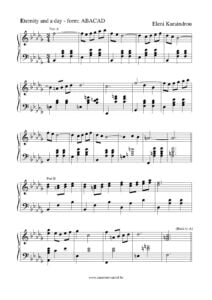 |
|
| Elf The Broadway Musical Songbook |
 |
Elf The Broadway Musical Songbook |
| Elgar Nimrod | Elgar Nimrod | |
| Elgar – Cello Concerto Op. 85 (Violoncello Solo Sheet Music) (Musescore File).mscz | ||
| Elgar – Enigma Variations – Nimrod (Sheet Music) (Musescore File).mscz | ||
| Elgar – Pomp And Circumstance March Op, 39 No. 1 Piano Solo | Elgar – Pomp And Circumstance March Op, 39 No. 1 Piano Solo | |
| Elgar Album For Pianoforte |
 |
Elgar Album For Pianoforte |
| Elgar Op. 38 Enigma Variations (Piano solo) |
 |
|
| Elgar Pomp And Circumstance March No. 1 Piano Solo (Musescore File).mscz | ||
| Elgar, Edward – Op12 Salut D’amour Liebesgruss (Piano Four Hands) | Elgar, Edward – Op12 Salut D’amour Liebesgruss (Piano Four Hands) | |
| Elgar, Edward – Op12 Salut D’amour Liebesgruss (Piano solo) | Elgar – Op12 Salut D’amour | |
| Eli Bolin Dancing Alone |
 |
|
| Elias Barreiro Guitar Music Of Cuba with TABs (Mel May) |
 |
Elias Barreiro Guitar Music Of Cuba with TABs (Mel May) |
| Elisa – Young Love | ||
| Elisabeth Das Musical Songbook Michael Kunze and Sylvester Levay |
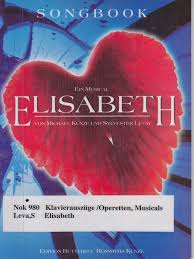 |
Elisabeth Das Musical Songbook Michael Kunze and Sylvester Levay |
| Elizabeth Cotton, The guitar of – by John Miller (Guitar TABs) |
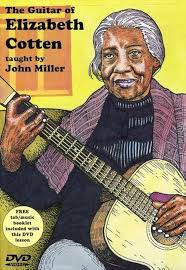 |
Elizabeth Cotton, The guitar of – by John Miller (Guitar TABs) |
| Elizabeth Poston – Jesus Christ The Apple Tree | ||
| Ella Fitzgerald – Forever Ella 19 Ella Fitzgerald Classics piano vocal songbook | Ella Fitzgerald – Forever Ella 19 Ella Fitzgerald Classics piano vocal songbook | |
| Ella Fitzgerald – Jam Session With |
 |
|
| Ella Fitzgerald – Piano Vocal Complete Songbook |
 |
Ella Fitzgerald – Piano Vocal Complete Songbook |
| Elliott Smith Guitar Songbook |
 |
Elliott Smith Guitar Songbook |
| Elmer Bernstein The Magnificient Seven Piano Vocal guitar Chords | Elmer Bernstein The Magnificient Seven Piano Vocal guitar Chords | |
| Elmer Bernstein To kill a mockingbird (Film Theme) | Elmer Bernstein To kill a mockingbird | |
| Elmore James Master Of The Electric Slide Guitar |
 |
Elmore James Master Of The Electric Slide Guitar |
| Els Segadors – Catalan anthem arr. for Choir SATB | Els Segadors – Cor | |
| Elton John Can You Feel The Love Tonight Lion King (Easy Piano Solo Arr.) (Musescore File).mscz | ||
| Elton John – Best of (piano & voice songbook) |
 |
Elton John – Best of (piano songbook) |
| Elton John – Can You Feel The Love Tonight | ||
| Elton John – Candle In The Wind | Candle in the wind | |
| Elton John – Crockodile Rock | ||
| Elton John – Daniel | ||
| Elton John – Dont Let The Sun Go Down On Me | ||
| Elton John – Eminem – Stan | ||
| Elton John – I Guess Thats Why They Call It The Blues | ||
| Elton John – Love Songs (Book) |
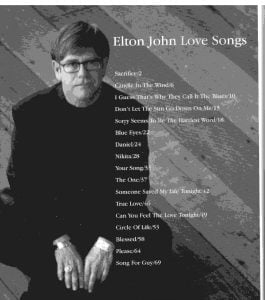 |
Elton John – Love Songs (Book) |
| Elton John – Nikita | ||
| Elton John – Rocket Man | Elton John – Rocket Man | |
| Elton John – Someone Saved My Life Tonight | ||
| Elton John – Something About The Way You Look Tonight | ||
| Elton John – Song For Guy | ||
| Elton John – Sorry Seems To Be The Hardest Word | Elton John – Sorry Seems To Be The Hardest Word | |
| Elton John – Take Me To The Pilot | ||
| Elton John – The Very Best Of – Piano Sheet Music |
 |
Elton John – The Very Best Of – Piano Sheet Music |
| Elton John – Tiny Dancer | ||
| Elton John – Tiny Dancer Sheet Music – sheet music |
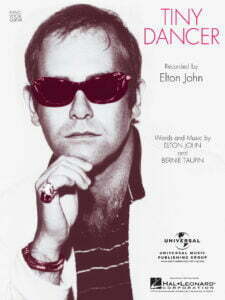 |
|
| Elton John – Your Song | ||
| Elton John – Your Song (Piano Solo) |
 |
|
| Elton John – Your Song (Guitar and TABS sheet music) |
 |
|
| Elton John – Your Song (Guitar And Tabs Sheet Music) (Musescore File).mscz | ||
| Elton John & Bernie Taupin – Sad Songs Say so much) |
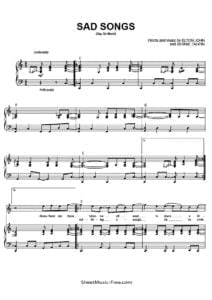 |
|
| Elton John And Eminem – Stan | ||
| Elton John Anthology 2nd Edition 60 Songs Piano Vocal Guitar |
 |
Elton John Anthology 2nd Edition 60 Songs Piano Vocal Guitar |
| Elton John Anthology 30 song (Songbook) Easy Piano 2nd Ed. |
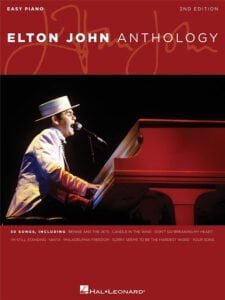 |
Elton John Anthology (Songbook) – Elton John & Frank Sinatra & Sammy Davis, Jr sheet music |
| Elton John Circle of life | Elton John Circle of life- | |
| Elton John Dont Let The Sun Go Down On Me (Musescore file).mscz | Musescore File | |
| Elton John Dont Let The Sun Go Down On Me Classical arr. Phillip Keveren Piano Solo | Elton John Dont Let The Sun Go Down On Me Classical arr. Phillip Keveren Piano Solo | |
| Elton John Favorites Songbook Piano Vocal Guitar Chords |
 |
Elton John Favorites Songbook Piano Vocal Guitar Chords |
| Elton John Fingerstyle Collection |
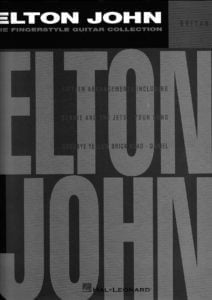 |
Elton John Fingerstyle Collection |
| Elton John Goodbye Yellow Brick Road Songbook |
 |
Elton John Goodbye Yellow Brick Road Songbook |
| Elton John Greatest Hits 1970 2002 Piano Vocal Guitar |
 |
Elton John Greatest Hits 1970 2002 Piano Vocal Guitar |
| Elton John Greatest Hits Updated Easy Piano |
 |
Elton John Greatest Hits Updated Easy Piano |
| Elton John Honky Chateau (Piano-Guitar-Vocal) |
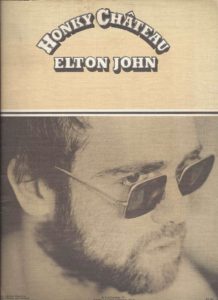 |
Elton John Honky Chateau (Piano-Guitar-Vocal) |
| Elton John Jazz Piano |
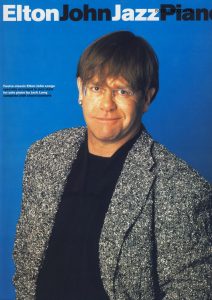 |
elton john sheet music jazz |
| Elton John Jazz Piano Solos Series Volume 29 (Elton John) |
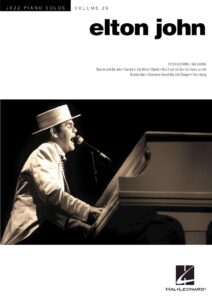 |
Elton John Jazz Piano Solo Series Volume 29 (Elton John) |
| Elton John Leather Jackets (Piano-Guitar-Vocal) |
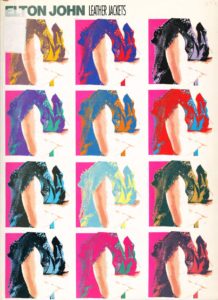 |
Elton John Leather Jackets (Piano-Guitar-Vocal) |
| Elton John Made In England |
 |
Elton John Made In England |
| Elton John Piano Solo Collection |
 |
Elton John Piano Solo Collection |
| Elton John Super Easy Songbook 22 Simple Arr For Piano |
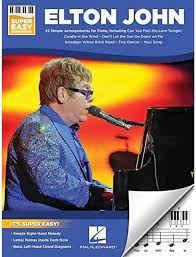 |
Elton John Super Easy Songbook (Elton John) |
| Elton John The Captain The Kid |
 |
Elton John The Captain The Kid |
| Elton John The Piano Transcriptions |
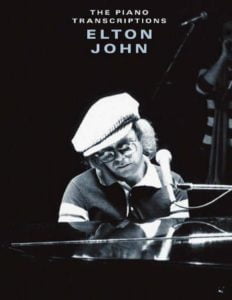 |
Elton John The Piano Transcriptions |
| Elton John The Ultimate Collection Vol. 1 |
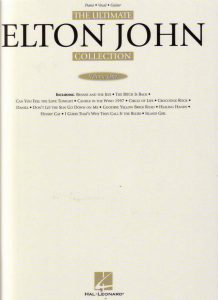 |
Elton John The Ultimate Collection Vol. 1 |
| Elton John The Ultimate Collection Vol. 2 |
 |
Elton John The Ultimate Collection Vol. 2 |
| Elton John Tim Rice – Aida (Songbook) Vocal Selections Piano Vocal Guitar Vocal Selections |
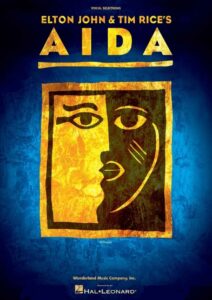 |
Aida (Songbook) Vocal Selections (Elton John Tim Rice) Piano Vocal Guitar |
| Elton John Ultimate Minus One Piano Trax Songbook With Cd (Mp3 Audio Tracks Play Along) |
 |
Elton John Ultimate Minus One Piano Trax Songbook With Cd (Mp3 Audio Tracks Play Along) |
| Elton John Your Song guitar (Musescore file).mscz | Musescore File | |
| Elton John, Britney Spears – Hold Me Closer Sheet Music |
 |
|
| Elton John, Can you Feel The Love Tonight, Lion King (Easy piano solo arr.) |
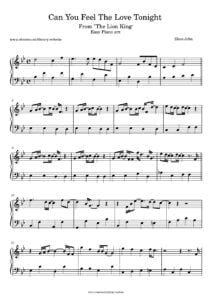 |
|
| Elton John, Play Piano With (pdf with embedded audio MP3) |
 |
Elton John, Play Piano With (pdf with embedded audio MP3) |
| Elvis Costello Everyday I Write The Song (songbook) |
 |
Elvis Costello Everyday I Write The Song (songbook incomplete) |
| Elvis Costello The Very Best Of |
 |
Elvis Costello The Very Best Of |
| Elvis For Dummies (For Dummies (Elvis Presley Biography) By Susan Doll (Book) |
 |
|
| Elvis Presley The Complete (Piano Guitar Chord Songbook) (Ray Connolly) |
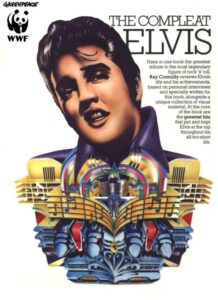 |
Elvis Presley The Complete (Piano Guitar Chord Songbook) (Ray Connolly) |
| Elvis Presley – Can’t Help Falling In Love |
 |
|
| Elvis Presley – Cant Help Falling In Love | Elvis Presley – Cant Help Fallin In Love | |
| Elvis Presley – Cant Help Falling In Love Elvis Presley-UB 40 Hit | ||
| Elvis Presley – In The Ghetto – Guitar Tabs (Mac Davis) | Elvis Presley – In The Ghetto – Guitar Tabs (Mac Davis) | |
| Elvis Presley – In The Ghetto – Guitar Tabs (Mac Davis) (Musescore File).mscz | ||
| Elvis Presley – It’s Easy To Play Elvis |
 |
Elvis Presley – It’s Easy To Play Elvis contents — It’s Easy To Play Elvis |
| Elvis Presley – It’s Now Or Never (For Guitars) (Musescore File).mscz | ||
| Elvis Presley – Last Train to Memphis.The rise of Elvis Presley, By Peter Guralnick (Book) |
 |
|
| Elvis Presley – Limelight | ||
| Elvis Presley – Love Me Tender | ||
| Elvis Presley – Love Me Tender (Piano Solo arr.) | Elvis Presley – Love Me Tender (Piano Solo arr.) | |
| Elvis Presley – Love Me Tender (Piano Solo Arr.) (Musescore File).mscz | ||
| Elvis Presley – Love me tender (Reharmonized) |
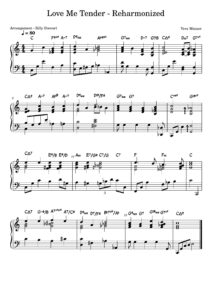 |
|
| Elvis Presley – Play guitar with Elvis (six classics Elvis Presley songs) with Tablature |
 |
Elvis Presley – Play guitar with Elvis (six classics elvis presley songs) |
| Elvis Presley – Return To Sender | ||
| Elvis Presley – Spanish Eyes | ||
| Elvis Presley – Spanish Harlem | ||
| Elvis Presley Authentic Record Transcriptions By Fred Sokolov Recorded Versions Piano Vocal Guitar TABs |
 |
Elvis Presley -Record Transcriptions – Vocal and Guitar Tablature |
| Elvis Presley Cant Help Falling In Love Sheet Music Piano Vocal Guitar |
 |
|
| Elvis Presley Favorites For Guitar With Tablature Arr. By Marcel Robinson Finger Guitar Style |
 |
Elvis Presley Favorites For Guitar With Tablature Arr. By Marcel Robinson Finger Guitar Style |
| Elvis Presley Guitar Chord Songbook 59 Songs With Lyrics |
 |
Elvis Presley Guitar Chord Songbook 59 Songs With Lyrics |
| Elvis Presley Guitar Play-Along Early (with AUDIO MP3 tracks) with Tablature |
 |
Early Elvis play along |
| Elvis Presley Guitar Songbook (Guitar Chords and Tabs) |
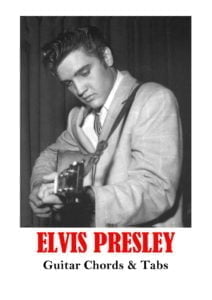 |
|
| Elvis Presley I Cant Help Falling In Love |
 |
|
| Elvis Presley Love Me Tender Piano solo arr. P. de Senneville and O. Toussaint |
 |
|
| Elvis Presley Love Me Tender Piano Vocal Guitar |
 |
|
| Elvis Presley Music Book Songs Of Inspiration |
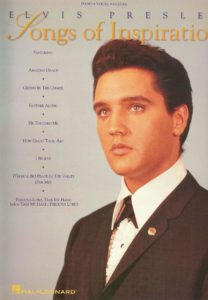 |
Elvis Presley Music Book Songs Of Inspiration |
| Elvis Presley Mystery Train Piano Vocal (as recorded by Elvis Presley) by Sam C. Phillips and Herman Parker Jr. | Mystery Train Piano Vocal (as recorded by Elvis Presley) by Sam C. Phillips and Herman Parker Jr. 1st page | |
| Elvis Presley Strum Sing Guitar Lyrics Chord symbols and diagrams |
 |
Elvis Presley Strum Sing Guitar |
| Elvis Ultimate Gospel Piano Vocal Guitar |
 |
Elvis Ultimate Gospel Piano Vocal Guitar |
| Emerson Keith – Honky Tonk Train Blues (Ragtime) |
 |
|
| Emerson Lake & Palmer Greatest Hits |
 |
Emerson Lake Palmer Greatest Hits |
| Emerson Lake and Palmer From The Beginning Guitar Tablature |
 |
|
| Emerson Lake And Palmer Book Anthology |
 |
Emerson Lake Amp Palmer Book Anthology |
| Emerson Lake And Palmer Songbook Piano-vocal |
 |
Emerson Lake And Palmer Songbook Piano-vocal |
| Emerson Lake And Palmer Tarkus Sheet Music Book |
 |
Emerson Lake And Palmer Tarkus Sheet Music Book |
| Emily Remler Bb Blues Guitar TABs | Emily Remler Bb Blues Guitar TABs | |
| Emily Remler Blues For Herb Guitar Tablature | Emily Remler Blues For Herb Guitar Tablature | |
| Emily Remler Red Blouse Guitar Tablature by Antonio Carlos Jobim | Emily Remler Red Blouse Guitar Tablature | |
| Emily Remler Retrospective Compositions Guitar Tablature |
 |
Emily Remler Retrospective Compositions Guitar Tablature |
| Eminem – Godzilla Piano vocal guitar chords sheet music |
 |
|
| Emozioni (Battisti) | ||
| Emozioni (Toto Cutugno) | ||
| Encyclopedia of scales, modes and melodic patterns for all instruments by Arnie Berle |
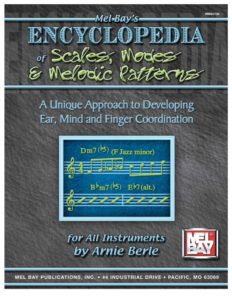 |
|
| Endless Love Wujin De Ai – Meili De Shenhua – Solo Guitar Arrangement with Tablature TABs |
 |
|
| Enfance (Une nouvelle amie OST) Philippe Rombi | ||
| Engelbert Humperdinck – The Last Waltz (Guitar TAB sheet music) | Engelbert Humperdinck – The Last Waltz (Guitar TAB sheet music) | |
| ENIGMA MCMXC a. D. (Piano – Vocal – Guitar) |
 |
ENIGMA MCMXC |
| Enjoy Playing The Guitar Book 2 Debbie Cracknell |
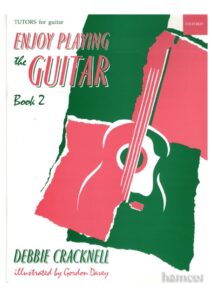 |
Enjoy guitar |
| Ennio Morricone The Legend Of 1900 Playing Love | Ennio Morricone – Playing Love | |
| Ennio Morricone Chi Mai Piano Duet | Ennio Morricone Chi Mai Piano Duet | |
| Ennio Morricone Cinema Paradiso (Guitar) |
|
|
| Ennio Morricone Cinema Paradiso Piano Duet | Ennio Morricone Cinema Paradiso Piano Duet | |
| Ennio Morricone The Untouchables Main Title Morricone (Easy Piano Solo) |
|
|
| Ennio Morricone – 12 Musiques de Films pour Piano songbook |
|
Ennio Morricone – 12 Musiques de Films pour Piano songbook |
| Ennio Morricone – Amapola (C’Era una Volta in America) | Ennio Morricone – Amapola | |
| Ennio Morricone – Best of |
|
Morricone Ennio, best of |
| Ennio Morricone – Cinema Paradiso – Main Theme (arr. for piano) |
 |
|
| Ennio Morricone – Cinema Paradiso – Se |
 |
Ennio Morricone – Cinema Paradiso – Se |
| Ennio Morricone – Death Theme from The Untouchables Piano Solo arr. | Ennio Morricone – Death Theme from The Untouchables Piano Solo arr. Sample | |
| Ennio Morricone – Death Theme from The Untouchables Piano Solo arr..mscz | ||
| Ennio Morricone – Ecstacy Of Gold Guitar with Tablature |
|
|
| Ennio Morricone – Good Bad Ugly | ||
| Ennio Morricone – Le Vent Le Cri Ennio (Guitar arr.) from the film The Professional with Tablature | Ennio Morricone – Le Vent Le Cri Ennio (Guitar arr.) from the fil The Professional | |
| Ennio Morricone – Le vent, le cri (Le Professionnel OST) | Le-vent-le-cri-Le-Professionnel-OST-Ennio-Morricone |
